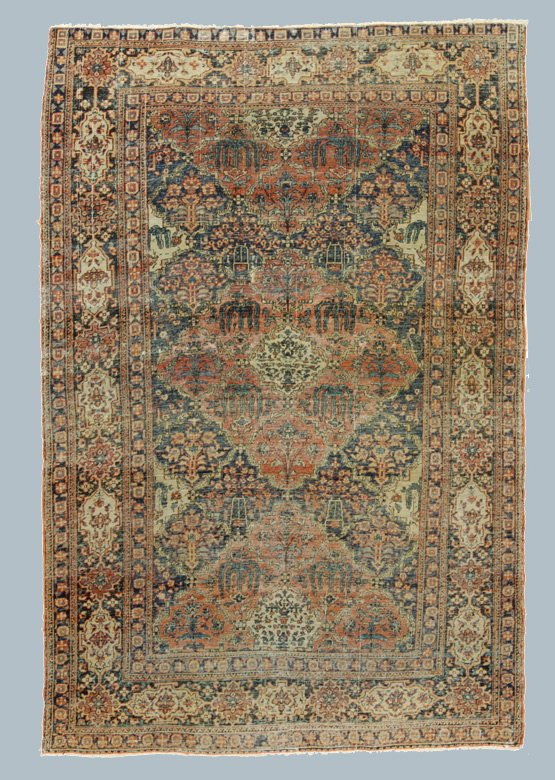code: 7174
type: persian carpets
collection: antique persian carpets
origin: iran
dimensions 130 x 195 cm
4' 3" x 6' 4"
4' 3" x 6' 4"
€819,67
$901.64
UE Citizens + Italian Vat Tax (22%)UE Companies Italian Vat Tax Free
Available from:
Morandi Tappeti
Condizione: Antico
Out of stock!
This carpet is in Italy - Castelvetro store
Ships in week
Ships in week
The carpet in question, consumed in the pile up to the plot in vast areas, from the second half of the nineteenth century. These pieces have been almost always, all kinds of oppression by improvised restorers who, thinking to do well, have them colored, restored unsuitable wool, cut and sewn in the most inappropriate ways. I'm glad I saved this beautiful carpet of Afshar and able to present it in ...leggi tuttoits entirety. So you can enjoy one of the finest Persian designs from which even in Mohtashem laboratories has is inspiring.
More info »
category: persian carpets
The Persian carpet is the carpet by definition, the best known and appreciated among the hand-knotted carpets. Generally named after the city or area of knotting. Kirman carpet, Kashan, Tabriz, Isfahan, Serapi, Senneh, Bakhtiari, Saruk, Sultanabad, Mahal, Ferahan, Mishan, Josan, Bidjar, Malayer, Hamadan
collection: antique persian carpets
We define the ancient carpets before the war of 1915/18. They have hand-spun wool dyed with vegetable colors, animals or minerals. In some rare cases have been used, limited to certain colors, the first aniline dyes. Saruk rugs, knotted with vegetable colors until 1930, are included in this group
The Persian carpet is the carpet by definition, the best known and appreciated among the hand-knotted carpets. Generally named after the city or area of knotting. Kirman carpet, Kashan, Tabriz, Isfahan, Serapi, Senneh, Bakhtiari, Saruk, Sultanabad, Mahal, Ferahan, Mishan, Josan, Bidjar, Malayer, Hamadan
collection: antique persian carpets
We define the ancient carpets before the war of 1915/18. They have hand-spun wool dyed with vegetable colors, animals or minerals. In some rare cases have been used, limited to certain colors, the first aniline dyes. Saruk rugs, knotted with vegetable colors until 1930, are included in this group
COMMENTS for AFSHARI
Write here your comment »
Questo reperto ci regala la classe di un antica produzione della Persia meridionale. Ormai gli antichi, anche se in precaria condizione di conservazione come questo bellissimo esemplare, sono diventati quasi introvabili. Chi conosce la storia e le vicissitudini della produzione delle popolazioni del Fars (vedi Qashqa i, la Confederazione Kamseh, Kirman), può essere in grado di apprezzarne il va...leggi tuttolore storico e artistico. Territori desertici: alcune comunità annodavano questi manufatti dentro grotte per difendersi da temperature infernali e utilizzavano candele o lumetti a olio in assenza di altre fonti di energia. La stessa antica acqua di lavaggio non è la stessa di oggi poichè inquinata come l erba delle loro greggi. Ora siamo al lumicino : non si trova più nulla se non moderni manufatti inguardabili.
Pierluigi - 25-08-2017 | 20:47:40
Pierluigi - 25-08-2017 | 20:47:40
Il trascorrere del tempo non ne ha alterato il fascino, anzi....
Filippo - 15-04-2017 | 13:34:53
Filippo - 15-04-2017 | 13:34:53






Your comment is awaiting moderation.